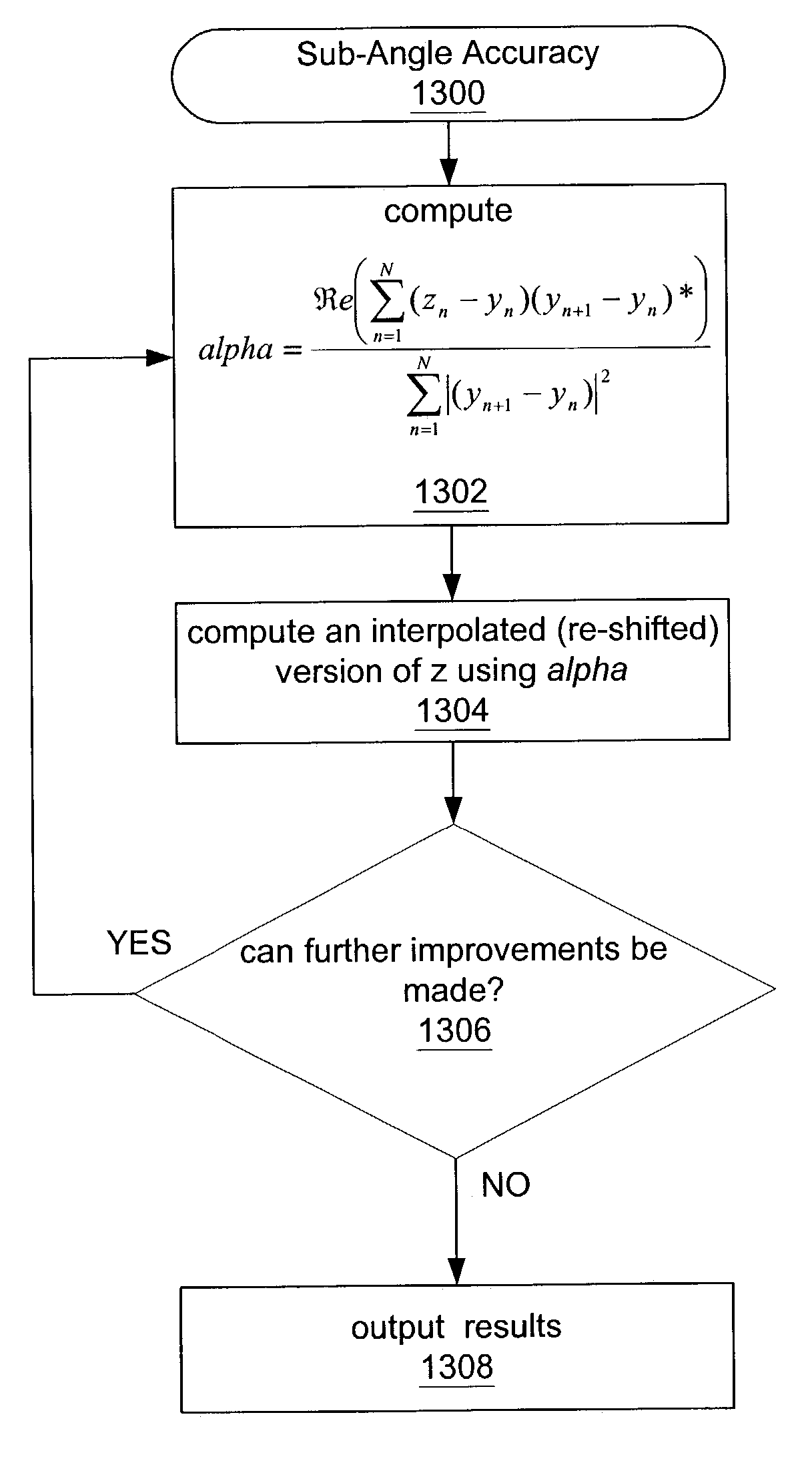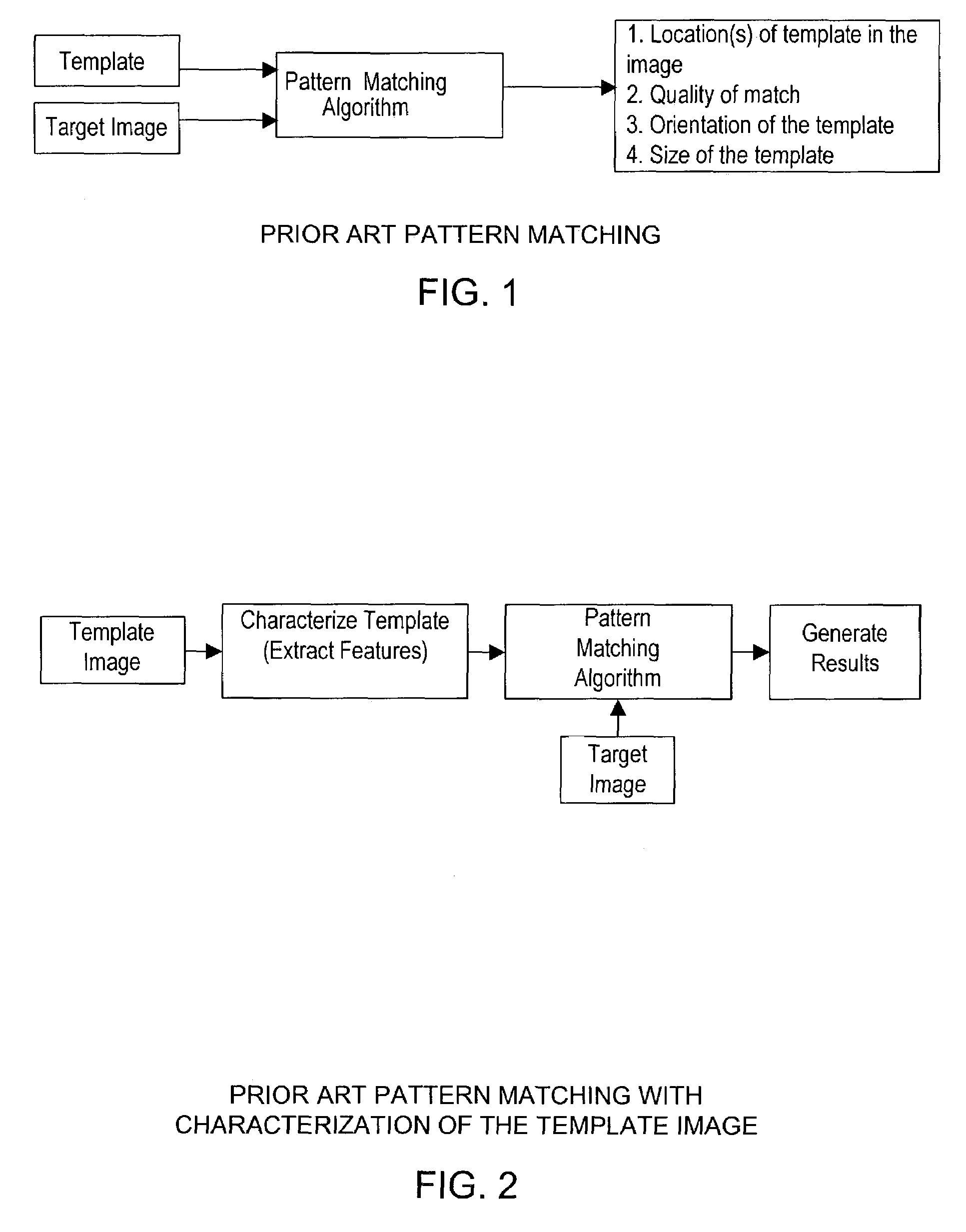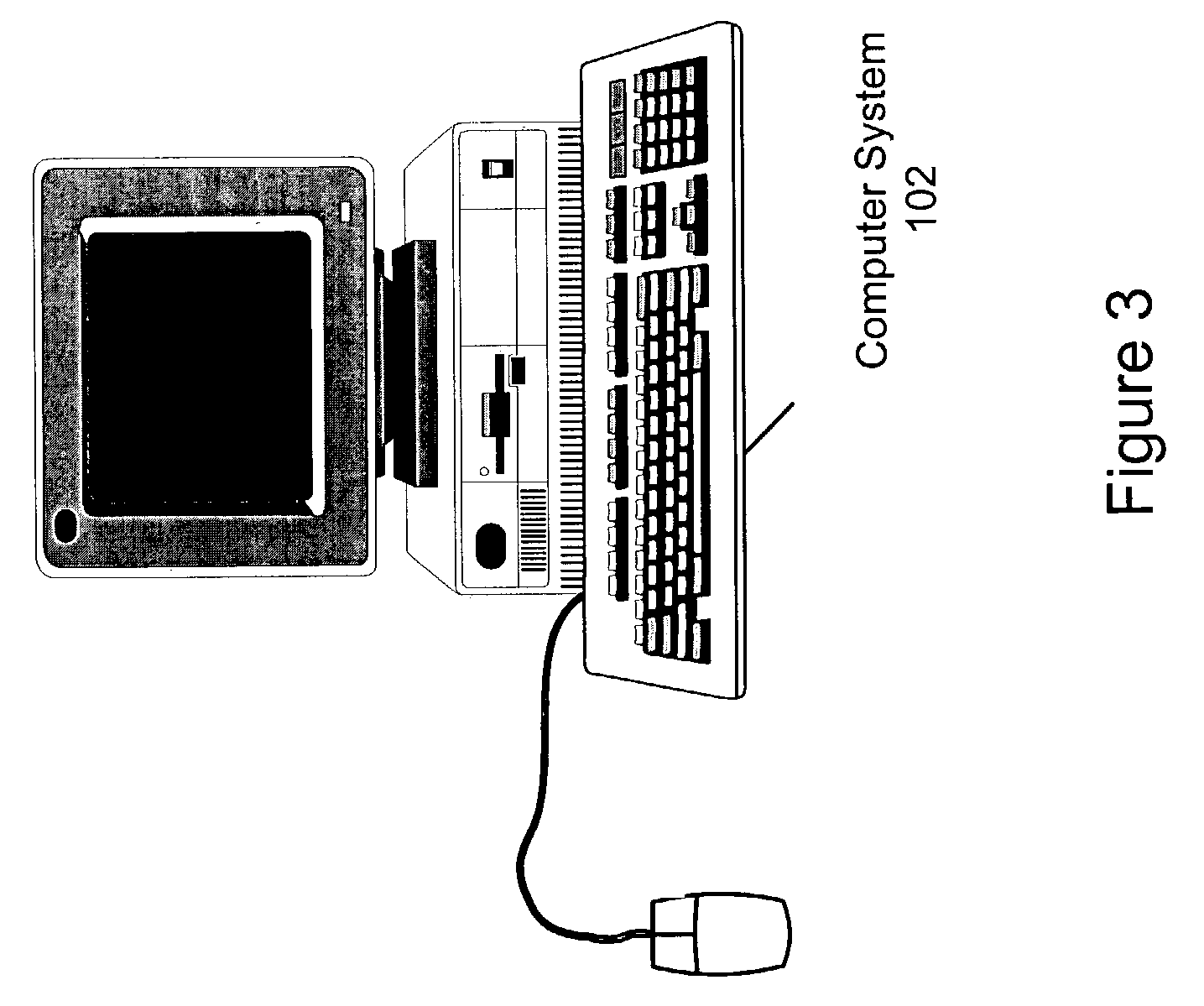Increasing accuracy of discrete curve transform estimates for curve matching
a discrete curve and transform technology, applied in the field of geometric pattern matching, can solve the problems of complicated pattern matching process, high computational intensity of the approach, and the analysis of the target image, so as to improve the accuracy of geometric pattern matching, improve the accuracy of curve matching of the two curves, and improve the effect of effective dimensionality
- Summary
- Abstract
- Description
- Claims
- Application Information
AI Technical Summary
Benefits of technology
Problems solved by technology
Method used
Image
Examples
Embodiment Construction
Incorporation by Reference
[0058]The following patent applications are hereby incorporated by reference in their entirety as though fully and completely set forth herein:
[0059]U.S. patent application Ser. No. 09 / 227,506 titled “Pattern Matching System and Method Which Performs Local Stability Analysis for Improved Efficiency” filed on Jan. 6, 1999, whose inventors are Dinesh Nair, Lothar Wenzel, Nicolas Vazquez, and Samson DeKey; and
[0060]U.S. Provisional Application Ser. No. 60 / 371,474 titled “Pattern Matching System Utilizing Discrete Curve Matching with a Mapping Operator”, filed Apr. 10, 2002.
[0061]The following publications are hereby incorporated by reference in their entirety as though fully and completely set forth herein:
[0062]The National Instruments IMAQ™ IMAQ Vision Concepts Manual; and
[0063]“Efficient Matching Of Discrete Curves”, by Lothar Wenzel, National Instruments, Austin, Tex.
Terms
[0064]The following is a glossary of terms used in the present application:
[0065]Memo...
PUM
 Login to View More
Login to View More Abstract
Description
Claims
Application Information
 Login to View More
Login to View More - R&D
- Intellectual Property
- Life Sciences
- Materials
- Tech Scout
- Unparalleled Data Quality
- Higher Quality Content
- 60% Fewer Hallucinations
Browse by: Latest US Patents, China's latest patents, Technical Efficacy Thesaurus, Application Domain, Technology Topic, Popular Technical Reports.
© 2025 PatSnap. All rights reserved.Legal|Privacy policy|Modern Slavery Act Transparency Statement|Sitemap|About US| Contact US: help@patsnap.com



